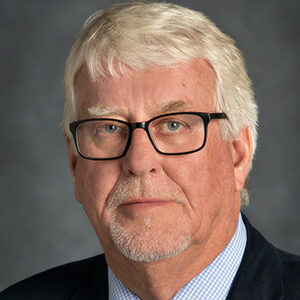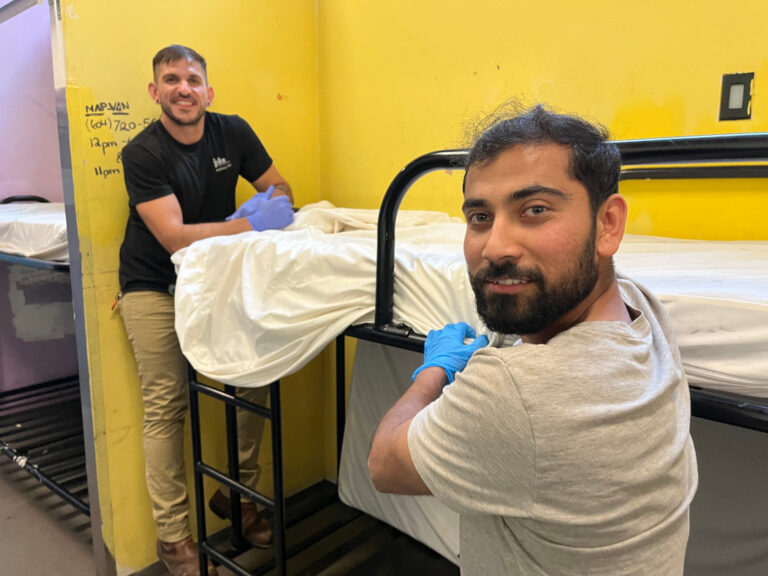The toxic drugs public health emergency is a crisis of incomprehensible scale that has claimed more than 11,000 lives in B.C. over seven years.
Announcing 596 drug deaths in the first three months of 2023, B.C.’s Chief Coroner Lisa Lapointe repeated her call to increase safe supply availability.
Dr. Perry Kendall, who as B.C.’s Provincial Health Officer declared the toxic drugs public health emergency in April 2016, is also a longstanding advocate for a lifesaving regulated supply.
The PHS Board member, having retired in 2018, wants to see more bravery in the public discussion about the major public health issue of our time. Illicit drugs are the leading cause of death for people aged 19 – 39 in B.C., having already killed more than COVID-19 in the province.
But it has received nowhere near the focus and attention that is commensurate with that other emergency.
In fairness, concedes Dr. Kendall, it’s a wicked problem. This is a planning/policy term for an issue that’s so multifaceted there’s no simple solution, with outcomes along the lines of better or worse rather than soundbite solutions.
Seven years ago Dr. Kendall called the public health emergency to give governments more power to address the growing crisis, and impose on them a greater sense of urgency.
 “Public health emergencies under the Public Health Act are framed to address disease outbreaks or epidemics, and most of the powers granted are around expediting communicable disease control measures, for example quarantine, but it did encourage the government to put additional money into it,” he said. “Also, it gave us the minister power to order organizations to set up overdose prevention sites and make more information available, particularly coroner’s reports.
“Public health emergencies under the Public Health Act are framed to address disease outbreaks or epidemics, and most of the powers granted are around expediting communicable disease control measures, for example quarantine, but it did encourage the government to put additional money into it,” he said. “Also, it gave us the minister power to order organizations to set up overdose prevention sites and make more information available, particularly coroner’s reports.
“We were able to see where overdoses were happening and get overdose prevention sites running and naloxone distributed.”
B.C. was the first jurisdiction in Canada to declare a public health emergency in this way, and it made a difference.
Although overdoses continued to rise, they levelled in 2018 at around 1,500, and dropped below 1,000 the following year.
“There was a 30 per cent drop in drug poisoning deaths in 2019, which was really encouraging,” he said. “Then COVID-19 hit and that closed down services and access to supports and we saw numbers go dramatically up.”
Looking ahead, Dr. Kendall feels the only way for the province to keep pace with increasingly toxic illicit drugs is through a “regulated access to a product with known purity.”
He’s not keen to take sides over the how of this, but feels that it’s beyond time for genuine public conversations about the various pros and cons (mostly pros) of decriminalization, legalization, drug user cooperatives and prescription safe supply.
Unfortunately, the public discussion seems to have been set back, increasingly focusing on enforcing sobriety rather than cutting out organized crime.
Frontline healthcare
Another setback is seeing safe supply portrayed in opposition to addiction medicine and treatment, when it is rather a critically important addition to the toolkit needed for physicians, nurses and others on the frontlines.
Addiction medicine in this context revolves largely around the prescription of opioids to people with opioid dependency. It aims to move people from short-acting street drugs like fentanyl or heroin to long-acting ones (methadone, buprenorphine, slow-release oral morphine, etc.).
Known as opioid agonist therapy (OAT), it brings stability to the lives of people who use drugs, and they can then access healthcare, housing and employment. And possibly rehab once things are going well.
But OAT doesn’t work for everyone. A significant proportion of the 24,000 who engage in methadone or suboxone maintenance each year find that it doesn’t work out for them and quit, and subsequently have no access to a safe alternative to the province’s toxic unregulated drug supply.
That’s where safe supply comes in.
Our own anecdotal findings from operating safe supply pilot programs is that providing medical-grade fentanyl does bring stability to the lives of drug users.
And, in turn, this stability can sometimes allow people to successfully re-enter OAT programs that previously didn’t work out for them.
But to say that governments has been moving ahead cautiously on safe supply is an understatement. B.C. has at least 83,000 people who may meet the criteria for opioid dependence, and 4,535 people prescribed safe supply medications.
More than seven years into the public health emergency B.C. is recording more than six lives lost per day due to unregulated drugs, as the provincial government announced in early April.
The B.C. Coroners Service reported that the total number of deaths due to toxic drugs in 2022 has been increased to 2,314, making it the deadliest year on record. And the nearly 600 deaths recorded for the first quarter of 2023 is on par with last year’s toll.
Urgent response overdue
“It is clear that an urgent response to this crisis is required and overdue,” said Lisa Lapointe, Chief Coroner. “This is a crisis of incomprehensible scale, and I extend my deepest condolences to everyone who has experienced the loss of someone they loved.”
“There should not be a dichotomy between access to life-saving safer supply and access to life-saving treatment options. Tens of thousands of British Columbians remain at risk of dying from toxic drugs and we continue to experience the tragedy of six people dying every single day, as we have for the past two years.
“All areas of our province are immensely affected by this crisis, and collaboration, innovation and the rejection of old stereotypes and failed solutions are necessary to prevent future deaths.”
- Learn more about innovative PHS programs and our supportive housing in Vancouver and Victoria, B.C.
- Donate to continue innovative projects like these.



